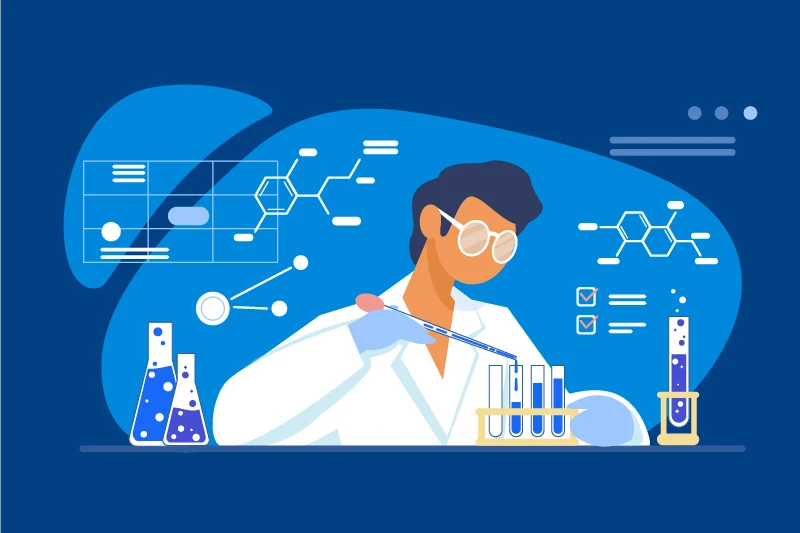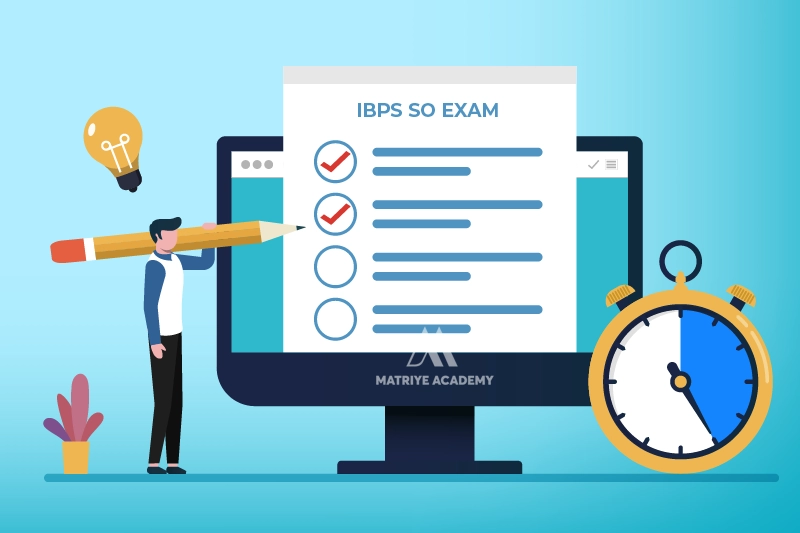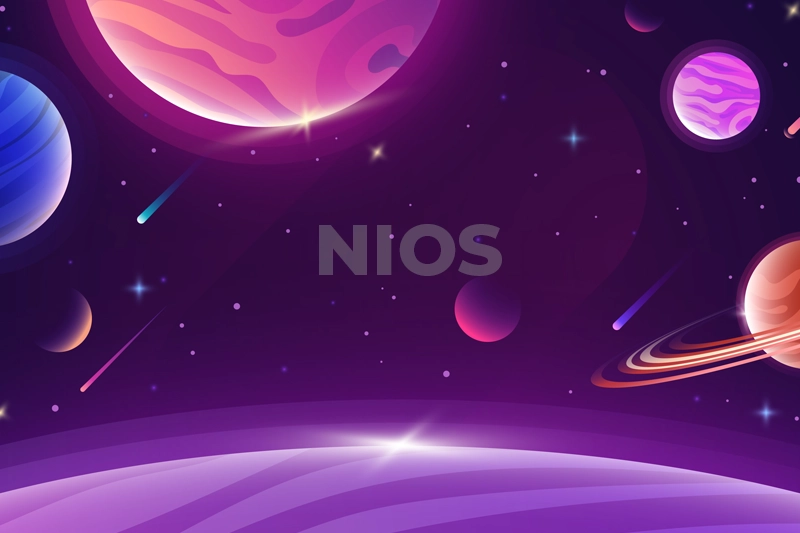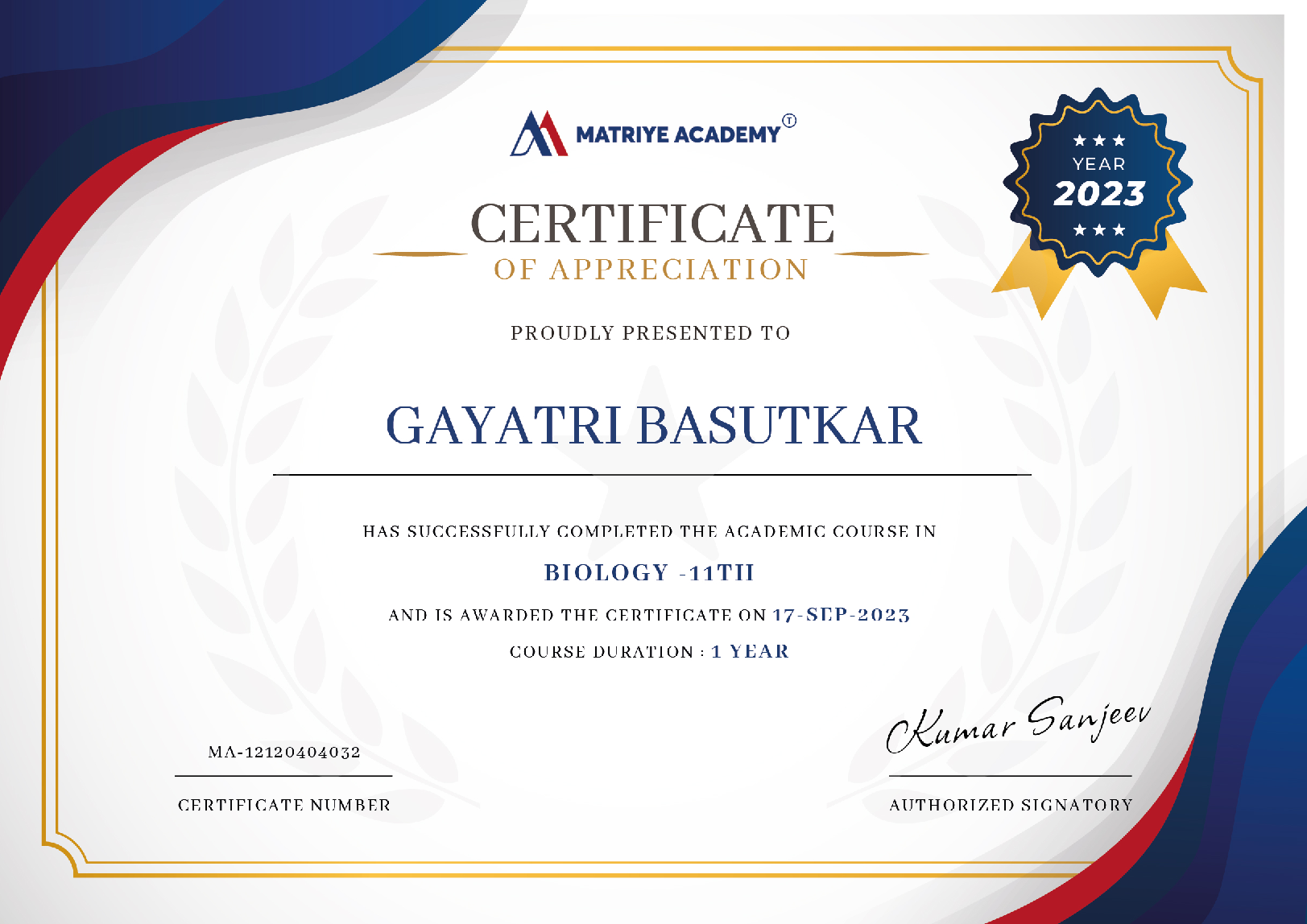
-
-
-
Advance your career
In 3-9 months, gain the skills to break into a new career or take your career to the next level.
10th
View allADVANCED MANAGEMENT PROGRAMME (MANUFACTURING AND OPERATIONS)
View allAGNIVEER MR
View allAGNIVEER SSR
View allALLAHABAD HC RO/ARO
View allAnthropology (B.Sc Anthropology)
View allArtificial Intelligence
View allASSOCIATION OF CHARTERED CERTIFIED ACCOUNTANTS [ACCA]
View allB.A (Hons.) Business Economics
View allB.A Geography
View allB.A Hons (English)
View allB.A. - Public Administration
View allB.A. Economics
View allB.A. English
View allB.A. in Fashion and Textile Design
View allB.A. in Jewellery and Accessory Design
View allB.A. in Political Science
View allB.A. in Visual Communication
View allB.A. Journalism and Mass Communication
View allB.A. LLB
View allB.Com (Hons.)
View allB.Ed or Bachelor of Education
View allB.Ed or Bachelor of Education in Physical Science
View allB.Sc - Computer Science
View allB.Sc - Electronics
View allB.Sc - Forensic Science
View allB.Sc - Genetics
View allB.Sc - Geology
View allB.Sc - Home Science
View allB.Sc - Horticulture
View allB.Sc - Life Sciences
View allB.Sc - Microbiology
View allB.Sc - Statistics
View allB.Sc - Zoology
View allB.Sc in Animation
View allB.Sc in Physiology
View allB.Sc LLB (B.Sc LLB)
View allB.Sc. (Hons.) Chemistry
View allB.Sc. (Hons.) Computer Science
View allB.Sc. (Hons.) Mathematics
View allB.Sc. (Hons.) Physics
View allB.Sc. Agriculture
View allB.Sc. Biochemistry
View allB.Sc. Biotechnology
View allB.Sc. Nursing
View allB.Tech - Automobile Engineering
View allB.Tech - Biochemical Engineering
View allB.Tech - Ceramic Engineering
View allB.Tech - Genetic Engineering
View allB.Tech - Instrumentation Engineering
View allB.Tech - Mechatronics Engineering
View allB.Tech - Mining Engineering
View allB.Tech - Production Engineering
View allB.Tech - Telecommunication Engineering
View allB.Tech - Textile Engineering
View allB.Tech : Mechanical Engineering
View allB.Tech-Artificial Intelligence
View allB.Tech-Chemical Engineering
View allB.Tech-Civil Engineering
View allB.Tech-Computer Science Engineering
View allB.Tech-Electrical Engineering
View allB.Tech-Electronics and Communications Engineering
View allB.Tech-Mechanical Engineering
View allBA LLB (BA LLB)
View allBachelor of Accounting and Finance (BAF)
View allBachelor of Audiology & Speech Language Pathology (BASLP)
View allBachelor of Banking & Insurance (BBI)
View allBachelor of Business Administration (BBA)
View allBachelor of Computer Applications (BCA)
View allBachelor of Design (B.Des)
View allBachelor of Education (B.Ed)
View allBachelor of Education (B.Ed) in History
View allBachelor of Education (B.Ed) Psychology
View allBachelor of Education (BE.d) English
View allBachelor of Education (BEd) Commerce
View allBachelor of Education (BEd) in Physical Education
View allBachelor of Education in Hindi
View allBachelor of Education in Tamil [B.Ed] (Tamil)
View allBachelor of Elementary Education (B.El.Ed)
View allBachelor of Financial Markets (BFM)
View allBachelor of Fine Arts
View allBachelor of Management Studies (BMS)
View allBachelor of Mass Communication (BMC)
View allBachelor of Mass Media (BMMC)
View allBachelor of Multimedia Communication (BMMC)
View allBachelor of Optometry
View allBachelor of Optometry (BOPTM)
View allBachelor of Physical Education (B.P.Ed)
View allBachelor of Tourism and Travel Management (BTTM)
View allBachelor of Visual Communication (B.V.C)
View allBachelor of Visual Communication (BVC)
View allBachelor of Vocation (B.Voc) in Software Development
View allBachelors in Banking and Insurance (BBI)
View allBachelors of Commerce and Bachelor of Legislative Law (B.Com LLB)
View allBBA LLB
View allBEd Political Science
View allBIHAR CGL TEST SERIES
View allBIHAR CIVIL COURT
View allBIHAR DAROGA
View allBIHAR PROHIBITION CONSTABLE
View allBOB PO
View allBOB SO
View allBOI SO
View allBPSC HEAD MASTER
View allBPSC SANITARY & WM
View allBusiness Analytics
View allCANARA BANK PO
View allCAT
View allCAT Exam
View allCBI SO
View allCBSE 5
View allCBSE 7
View allCBSE 1
View allCBSE 11th
View allCBSE 12TH
View allCBSE 2
View allCBSE 3
View allCBSE 4
View allCBSE 6
View allCBSE 8
View allCBSE 9TH
View allCBSE CTET
View allCDS
View allCERTIFICATE IN BUSINESS ANALYTICS
View allCertificate Course in Accounting
View allCertificate Course in Banking
View allCERTIFICATE COURSE IN BANKING
View allCERTIFICATE COURSE IN BUSINESS ANALYTICS
View allCERTIFICATE COURSE IN C++
View allCERTIFICATE COURSE IN COMMUNICATIVE ENGLISH
View allCERTIFICATE COURSE IN COMPUTER APPLICATION [CCA]
View allCertificate Course in Fashion Design
View allCERTIFICATE COURSE IN FINANCIAL ACCOUNTING & TAXATION [CCFAT]
View allCERTIFICATE COURSE IN FRENCH
View allCERTIFICATE COURSE IN FUNCTIONAL ENGLISH
View allCERTIFICATE COURSE IN GERMAN
View allCERTIFICATE COURSE IN INFORMATION TECHNOLOGY
View allCertificate Course in Interior Design
View allCERTIFICATE COURSE IN INTERIOR DESIGN
View allCertificate Course in JAVA
View allCERTIFICATE COURSE IN JAVA
View allCERTIFICATE COURSE IN JOURNALISM
View allCERTIFICATE COURSE IN PHOTOGRAPHY
View allCERTIFICATE COURSE IN PHYSIOTHERAPY
View allCERTIFICATE COURSE IN SPANISH
View allCERTIFICATE COURSE IN SPOKEN ENGLISH
View allCertificate Course in Stock Market
View allCERTIFICATE COURSE IN STOCK MARKET
View allCertificate Course in Tally
View allCERTIFICATE COURSE IN TALLY
View allCERTIFICATE COURSE IN YOGA
View allCertificate courses in C ++
View allCERTIFICATE IN ACCOUNTING
View allCertificate in Animation
View allCERTIFICATE IN ANIMATION
View allCertificate in Auto CAD
View allCERTIFICATE IN AUTO CAD
View allCertificate in CAD
View allCERTIFICATE IN CAD
View allCertificate in Cloud Computing
View allCERTIFICATE IN CLOUD COMPUTING
View allCertificate in Computer Application
View allCERTIFICATE IN COSMETOLOGY
View allCERTIFICATE IN DISASTER MANAGEMENT [CDM]
View allCERTIFICATE IN ENGLISH
View allCERTIFICATE IN HINDI
View allCERTIFICATE IN HUMAN RESOURCES
View allCertificate in Information Technology
View allCERTIFICATE IN INSURANCE SERVICES
View allCERTIFICATE IN LABORATORY TECHNIQUES [CPLT]
View allCERTIFICATE IN PROJECT MANAGEMENT
View allCERTIFICATE IN TOURISM AND TRAVEL MANAGEMENT
View allCERTIFICATE IN WEB DESIGNING
View allCertificate in Web Designing.
View allCERTIFICATE PROGRAM IN SUPPLY CHAIN MANAGEMENT
View allCERTIFICATE PROGRAMME IN SALES AND MARKETING
View allCERTIFIED COURSE IN FOOD AND NUTRITION
View allCERTIFIED FINANCIAL PLANNER [CFP]
View allCHARTERED ACCOUNTANT
View allChartered Financial Analyst
View allchinese
View allCISF CONSTABLE/TRADESMEN
View allCIVIL SERVICES
View allCLAT
View allCLAT EXAMS
View allCloud Computing
View allCOMBINED GEO-SCIENTIST
View allCOMBINED MEDICAL SERVICES
View allContent Writing
View allCraftsmanship Course in Food Production
View allCRPF ASI/HC
View allCRPF CONSTABLE TRADESMAN
View allCRPF SI & ASI
View allCS (Company Secretary)
View allCUET
View allCyber Security
View allD.EL.Ed.
View allData Analytics
View allData Science
View allDigital Marketing
View allDiploma in 3D Animation
View allDiploma in Advertising and Marketing
View allDiploma in Airline, Travel and Tourism Management
View allDiploma in Animation and Multimedia
View allDIPLOMA IN ARCHITECTURE ENGINEERING
View allDIPLOMA IN AUTOMOBILE ENGINEERING
View allDiploma in Bakery and Confectionery
View allDIPLOMA IN BIOMEDICAL ENGINEERING
View allDIPLOMA IN CHEMICAL ENGINEERING
View allDIPLOMA IN CIVIL ENGINEERING
View allDiploma in Communicative English
View allDIPLOMA IN COMPUTER ENGINEERING
View allDIPLOMA IN COMPUTER SCIENCE AND ENGINEERING
View allDIPLOMA IN DENTAL HYGIENIST
View allDIPLOMA IN DENTAL MECHANICS
View allDiploma in education
View allDIPLOMA IN ELECTRICAL & ELECTRONICS ENGINEERING
View allDIPLOMA IN ELECTRICAL ENGINEERING
View allDIPLOMA IN ELECTRONICS ENGINEERING
View allDiploma in elementary education
View allDiploma in Engineering
View allDiploma in Event Management
View allDIPLOMA IN FINE ARTS
View allDiploma in Food and Beverage Services
View allDiploma in Gemology
View allDiploma in Hotel Management (DHM)
View allDiploma in Information Technology
View allDIPLOMA IN INFORMATION TECHNOLOGY
View allDiploma in Interior Designing
View allDiploma in Journalism and Mass Communication (DJMC)
View allDIPLOMA IN MECHANICAL ENGINEERING
View allDIPLOMA IN MECHATRONICS
View allDiploma in Medical Lab Technology
View allDiploma in Medical Laboratory Technology (DMLT)
View allDIPLOMA IN MINING ENGINEERING
View allDiploma in Multimedia
View allDiploma in Nursing
View allDiploma in Nursing Care Assistant (DNCA)
View allDiploma in Nutrition and Dietetics
View allDiploma in Office Management
View allDIPLOMA IN PETROLEUM ENGINEERING
View allDiploma in Photography
View allDiploma in Physiotherapy
View allDIPLOMA IN PRODUCTION ENGINEERING
View allDiploma in Radiological Technology
View allDiploma in Rural Healthcare
View allDiploma in Scriptwriting/Creative Writing
View allDiploma in Sound Recording
View allDiploma in Travel & Tourism
View allDiploma in Visual Merchandising
View allDiploma in X-Ray Technician
View allEmail-Marketing
View allEPFO
View allFashion Designer
View allFCI MANAGEMENT TRAINEE
View allFEDERAL BANK PO
View allFull-Stack Developer
View allGATE
View allGraphic Design
View allHARCO BANK
View allHPSC PGT
View allHSSC Canal Patwari
View allHSSC GRAM SACHIV
View allIB SA/EXE & MTS/GEN
View allIBPS CLERK
View allIBPS PO
View allIBPS RRB OFFICE ASSISTANT
View allIBPS RRB OFFICER SCALE 1
View allIBPS SO Exam
View allIBPS Specialist Officer Exams
View allICAR
View allIIBF JE
View allINDIAN AIRFORCE APPRENTICE
View allINDIAN BANK COST GUARD (GD/DB)
View allINDIAN BANK PO
View allINDIAN BANK SO
View allINDIAN ECONOMIC SERVICE
View allINDIAN ER.SERVICES
View allINDIAN FOREST SERVICE
View allINDIAN NAVY AA/SSR
View allIPPB
View allJH POLICE RO
View allJK BANK PO
View allJK POLICE CONSTABLE
View allJob Oriented
View allJSSC EXCISE AND PROHIBITION
View allKG
View allLAKHSMI VILAS BANK PO
View allLDCE
View allLIC AAO
View allLIC ADO
View allLIC HFL
View allLL.M - Criminal Law
View allLL.M - Cyber Law
View allLL.M - International Law
View allLL.M - Labour Law
View allM.A. - Public Administration
View allM.A. in Economics
View allM.A. in English
View allM.A. Political Science
View allM.A. Rural Development
View allM.A.in History
View allM.Sc - Geoinformatics
View allMachine Learning
View allMaster of Education (M.Ed)
View allMaster of Law (LL.M)
View allMaster of Mass Communication (MMC)
View allMasters in Journalism and Mass Communication (MJMC)
View allMasters of Business Administration (MBA)
View allMAT
View allMBA - Communication Management
View allMBA - Customer Relationship Management (MBA CRM)
View allMBA - Environmental Management
View allMBA - Healthcare & Hospital Management
View allMBA - Hospitality Management
View allMBA - Logistics and Supply Chain Management
View allMBA - Materials Management
View allMBA - Media Management
View allMBA - Natural Resource Management
View allMBA - Operations Management
View allMBA - Project Management
View allMBA - Retail Management
View allMBA - Risk Management
View allMBA - Rural Development Management
View allMBA - Sales Management
View allMBA - Sports Management
View allMBA - Sustainable Management
View allMBA - Technology Management
View allMBA-Finance
View allMBA-Hr
View allMBA-Insurance
View allMBA-IT
View allMBA-Marketing
View allMCM: Masters of Computer Management
View allMP PATWARI
View allMP PSC
View allMP TET
View allMPPSC FOREST SERVICE
View allNAINITAL BANK
View allNDA & NA
View allNIOS 10
View allNIOS 11
View allNIOS 12
View allNIOS D.EL.ED.
View allNTPC CBT
View allOICL RECRUITMENT
View allOSSSC RECRUITMENT
View allPATNA HC STENO
View allPGP - Tax Management
View allPost Graduate Diploma in Technical Writing
View allProgramming
View allProject Management
View allRBI ASSISTANT
View allRBI Grade B Exam
View allRRB ASSISTANT LOCO PILOT
View allRRB Group D.
View allRSCB
View allRSMSSB COMPUTOR
View allRSMSSB FOREST GUARD
View allRSMSSB INFORMATICS ASSISTANT
View allRSMSSB JE
View allRSMSSB LAB TECH
View allRSMSSB LIB
View allRSMSSB PATWARI
View allRSMSSB PHARMACIST
View allSBI Clerk
View allSBI Clerk 2024
View allSBI PO
View allSIDBI GRADE A
View allSIDBI GRADE B
View allSocial Media Marketing
View allSoft Skills
View allSoftware Development.
View allSSC SELECTION POST
View allUIIC ASSISTANT
View allUPPSC ASST.PRO
View allUPPSC NURSE
View allUPPSC PROGRAMMER
View allUPSSSC ATA
View allUPSSSC INSTRUCTOR
View allUPSSSC VDO
View allVCBL PO
View allWealth Management
View allWeb Designing
View allXAT
View allDiploma in Cosmetology
View all
-
-
-
Advance your career
In 3-9 months, gain the skills to break into a new career or take your career to the next level.
-
-
-
Advance your career
In 3-9 months, gain the skills to break into a new career or take your career to the next level.
-
-
-
Advance your career
In 3-9 months, gain the skills to break into a new career or take your career to the next level.
Arts And Humanities.
No courses found
Business
View allCertificate
View allComputer Science
No courses found
Graphic Design
No courses found
Health
No courses found
Information Technology
View allLanguage Learning
No courses found
Math And Logic
No courses found
Physical Science And Engineering
No courses found
Social Science
No courses found
Soft Skills
No courses found
-
-
-
Find your new career
Breakthrough pricing on 100% online degrees designed to fit into your life.
CERTIFICATE IN ANIMATION
No subjects found
Get started
-
-
-
Find your new career
Breakthrough pricing on 100% online degrees designed to fit into your life.
CERTIFICATE COURSE IN COMMUNICATIVE ENGLISH
No subjects found
CERTIFICATE COURSE IN FRENCH
No subjects found
CERTIFICATE COURSE IN FUNCTIONAL ENGLISH
No subjects found
CERTIFICATE COURSE IN GERMAN
No subjects found
CERTIFICATE COURSE IN SPANISH
No subjects found
CERTIFICATE COURSE IN SPOKEN ENGLISH
No subjects found
CERTIFICATE IN ENGLISH
No subjects found
CERTIFICATE IN HINDI
No subjects found
CERTIFICATE IN INSURANCE SERVICES
No subjects found
DIPLOMA IN FINE ARTS
No subjects found
Get started
-
-
-
Find your new career
Breakthrough pricing on 100% online degrees designed to fit into your life.
No courses found
Get started
-
-
-
Find your new career
Breakthrough pricing on 100% online degrees designed to fit into your life.
Certificate Course In Accounting
No subjects found
Certificate Course In Banking
No subjects found
Certificate Course In Interior Design
No subjects found
Certificate Course In Stock Market
No subjects found
Certificate Course In Tally
No subjects found
Get started
-
-
-
Find your new career
Breakthrough pricing on 100% online degrees designed to fit into your life.
Certificate Course In Fashion Design
No subjects found
Certificate In Auto CAD
No subjects found
Certificate In CAD
No subjects found
Chinese
No subjects found
Get started
-
Goals
Departments
-
Chemistry
Academic |
NIOS 12
NIOS Class 12 Chemistry is a course that aims to provide a comprehensive understanding of the subject to students. The course is designed to help students develop a strong foundation in Chemistry and provide them with a deep understanding of the principles and concepts underlying the subject.

Runali Deb Roy
Last Update : 15 May 2023
Explore the World of Chemistry with Matriye Academy
The NIOS Class 12 Chemistry course covers a wide range of topics related to Chemistry. The course is designed to provide students with a comprehensive understanding of the subject and enable them to apply their knowledge to solve real-world problems.
The course begins with an introduction to Chemistry, including its history, branches, and applications. Then, it covers the fundamental concepts of Chemistry such as the structure of the atom, chemical bonding, periodic classification of elements, and chemical reactions.
After that, the course delves deeper into various topics, including chemical kinetics, electrochemistry, solutions, surface chemistry, and coordination compounds. The course also covers organic chemistry, including its basic principles, nomenclature, isomerism, and reactions of different organic compounds.
The NIOS Class 12 Chemistry course also includes laboratory work, where students will perform experiments related to the concepts taught in the theory part of the course. Students will learn about the safety measures and techniques required for conducting experiments in a chemistry laboratory.
By the end of the course, students will have a deep understanding of the fundamental concepts of Chemistry, including both theoretical and practical knowledge. They will be able to apply their knowledge to solve problems related to Chemistry and pursue higher education in the field of Chemistry.
Master the Concepts of CBSE Class 12 Chemistry
- Solid state
- Solutions
- Electrochemistry
- Chemical Kinetics
- Surface chemistry
- General principles and processes of isolation of elements
- p-block elements
- d and f block elements
- Coordination compounds
- Haloalkanes and haloarenes
- Alcohols, phenols and ethers
- Aldehydes, ketones and carboxylic acids
- Organic compounds containing nitrogen
- Biomolecules
- Polymers
- Chemistry in everyday life
Course Content
- Matter and its nature
- Dalton’s atomic theory
- Concept of atom, molecule, ion, element, and compound
- Chemical formulae
- Balanced chemical equations
- Laws of chemical combination
- Atomic and molecular masses
- Mole concept and molar mass
- Percentage composition, empirical formula, and molecular formula
- Chemical reactions, stoichiometry, and calculations based on stoichiometry
- Discovery of electron, proton, and neutron
- Atomic number, isotopes, and isobars
- Thomson’s model and its limitations
- Rutherford’s model and its limitations
- Bohr’s model and its limitations
- Concept of shells and subshells
- Dual nature of matter and light
- De Broglie’s relationship
- Heisenberg uncertainty principle
- Concept of orbitals, quantum numbers, and their significance
- Electronic configuration of elements, Aufbau principle, Pauli’s exclusion principle, and Hund’s rule
- Significance of classification
- Brief history of the development of the periodic table
- Modern periodic law and the present form of the periodic table
- Periodic trends in properties of elements
- Atomic radii, ionic radii, inert gas radii
- Ionization enthalpy
- Electron gain enthalpy
- Valency
- Nomenclature of elements with atomic number greater than 100
- Kossel - Lewis approach to chemical bond formation
- Ionic bond, covalent bond, and metallic bond
- VSEPR theory and shapes of simple molecules
- Quantum mechanical approach to covalent bonding
- Hydrogen bond
- Polarity in molecules
- Dipole moment
- Valence bond theory and hybridization involving s, p, and d orbitals
- Resonance
- Molecular orbital theory and its applications
- Intermolecular forces
- Thermal energy
- Intermolecular forces vs thermal interactions
- The Gaseous State
- Ideal gas equation
- Kinetic theory of gases
- Concept of average, root mean square, and most probable velocities and their relation with temperature
- Law of partial pressures
- Diffusion and effusion
- Non-ideal behavior of gases and deviation from ideal behavior
- Liquefaction of gases
- Critical temperature
- The System and the Surroundings
- Types of Systems
- Types of Processes
- The First Law of Thermodynamics
- The relation between ΔU and ΔH
- Enthalpy of bond dissociation, combustion, formation, atomization, sublimation, phase transition, hydration, and solution
- Hess’s law of constant heat summation
- Second law of Thermodynamics
- Gibbs energy change for spontaneous and non-spontaneous processes
- Relationship between ΔG and Kp
- Criteria for equilibrium
- Third law of thermodynamics
- Equilibrium in physical and chemical processes
- Dynamic nature of equilibrium
- Law of mass action
- Equilibrium constant
- Factors affecting equilibrium
- Le Chatelier’s principle
- Ionic equilibrium - weak electrolytes, ionization of acids and bases, strong electrolytes and solubility products, common ion effect, hydrolysis of salts, and pH scale
- The classical idea of redox reactions
- Redox reactions in terms of electron transfer reactions
- Oxidation number
- Balancing redox reactions
NIOS Class 12 Chemistry
NIOS Class 12 Chemistry is a course designed to provide students with a solid foundation in chemistry. The course covers a wide range of topics that include the study of matter, chemical reactions, and chemical equations. Here are the course details for NIOS Class 12 Chemistry:
The course consists of four blocks, each containing a number of units. The units are designed to provide students with a comprehensive understanding of chemistry and its applications.
Examination: The examination for NIOS Class 12 Chemistry consists of both theory and practical components. The theory exam is for 70 marks, and the practical exam is for 30 marks. To be eligible to appear for the examination, students must have completed all the assignments and practical work.
Certification: Upon successful completion of the course and passing the examination, students will be awarded the NIOS Class 12 Chemistry certificate.
Overall, the course is designed to provide students with a strong foundation in chemistry and prepare them for higher studies and careers in science-related fields.
Course Description
NIOS Class 12 Chemistry is a comprehensive course that provides students with a deep understanding of the fundamental concepts of chemistry. The course covers a wide range of topics, from the basics of chemistry to advanced topics such as organic chemistry, electrochemistry, and thermodynamics. Students will learn about the various branches of chemistry and their applications in real life, including the chemical composition of various substances, their properties, and the reactions that they undergo.
The course also focuses on the practical aspects of chemistry, including laboratory experiments, chemical analysis, and the proper use of laboratory equipment. Students will be introduced to the scientific method and will learn how to conduct experiments, collect data, and analyze results.
The course is designed to help students develop critical thinking skills and problem-solving abilities. By the end of the course, students will have a solid foundation in chemistry and will be well-prepared to pursue further studies in the field or to apply their knowledge in various scientific and industrial settings.
- Duration 12 Months
- Level Beginner
- Lectures 16 Lectures
- Language English
- Enrolled 100+ Enrolled
- Recorded Video 44
- Notes 20
- MCQs 55
- PPTs 50
- Live Test Series 58
- E-Book 30
Benefits of Studying Chemistry
Studying Chemistry at the Class 12 level has numerous benefits. Some of the major benefits of studying Chemistry are:
Enhances problem-solving skills: Chemistry requires logical thinking and problem-solving skills, which help to improve analytical and critical thinking abilities.
Improves career prospects: Knowledge of Chemistry opens up a wide range of career opportunities in fields like chemical engineering, research and development, pharmaceuticals, environmental science, and more.
Understanding of the world around us: Chemistry provides a deeper understanding of the world around us, including the substances and materials we interact with on a daily basis.
Helps in other subjects: Chemistry is closely related to other subjects like physics, biology, and environmental science. So, studying chemistry can help in understanding these subjects better as well.
Develops laboratory skills: Chemistry involves performing experiments and working in the laboratory. By doing so, students can develop practical skills like accurate measurement, recording observations, and handling chemicals safely.
Overall, studying chemistry provides students with a comprehensive knowledge of the subject and its applications, which is valuable for personal and professional growth.

Course Structure
1
Unit 1: Solid State
- Classification of solids based on different binding forces; molecular, ionic, covalent, and metallic solids
- Crystal lattice and unit cell
- Number of atoms in a unit cell
- Close-packed structures - hexagonal and cubic (primitive, body-centred, and face-centred)
- Packing efficiency in hcp and ccp
- Imperfections in solids
- Electrical and magnetic properties
2
Unit 2: Solutions
- Types of solutions
- Raoult's law
- Colligative properties
- Abnormal molar masses
- Van't Hoff factor
- Ideal and non-ideal solutions
- Osmosis and osmotic pressure
- Reverse osmosis and water purification
3
Unit 3: Electrochemistry
- Conductance in electrolytic solutions
- Faraday's laws of electrolysis
- Galvanic cells and their components
- Standard electrode potentials
- Nernst equation and its application
- Relationship between Gibbs energy change and cell potential
- Fuel cells
4
Unit 4: Chemical Kinetics
- Rate of a reaction
- Factors affecting the rate of reaction
- Rate law and rate constant
- Order of a reaction
- Integrated rate equations
- The half-life period of a reaction
- Activation energy
- Arrhenius equation
5
Unit 5: Surface Chemistry
- Adsorption
- Types of adsorption
- Absorption and sorption
- Catalysis and its types
- Colloidal state
- Properties of colloids
- Emulsions, micelles and reverse micelles
6
Unit 6: General Principles and Processes of Isolation of Elements
- Occurrence of metals
- Concentration of ores
- Extraction of crude metal
- Thermodynamic and electrochemical principles
- Refining of metals
- Uses of aluminum, copper, iron, and zinc
7
Unit 7: p-Block Elements
- Electronic configuration and general characteristics of p-block elements
- Group 15 elements: Nitrogen, preparation, properties, and uses of ammonia and nitric acid
- Group 16 elements: Oxygen, preparation, properties, and uses of ozone, sulfur, sulphuric acid
- Group 17 elements: Halogens, properties, preparation, and uses of chlorine and hydrochloric acid
- Group 18 elements: Noble gases, preparation, properties, and uses of helium, neon, and xenon
8
Unit 8: d and f Block Elements
- Electronic configuration of d-block and f-block elements
- Characteristics of transition metals
- General trends in the properties of the first-row transition metals
- Preparation and properties of K2Cr2O7 and KMnO4
9
Unit 9: Coordination Compounds
- Werner's theory of coordination compounds
- Nomenclature of coordination compounds
- Isomerism in coordination compounds
- Bonding in coordination compounds
- Magnetic properties of coordination compounds
10
Unit 10: Haloalkanes and Haloarenes
- Nomenclature of haloalkanes and haloarenes
- Preparation, physical and chemical properties, and uses of haloalkanes and haloarenes
- Mechanism of SN1 and SN2 reactions
- Polyhalogen compounds
11
Unit 11: Alcohols, Phenols and Ethers
- Nomenclature and general methods of preparation
- Physical and chemical properties and uses
- Acidity and basicity of alcohols and phenols
- Substitution reactions in alcohol
12
Unit 12: Aldehydes, Ketones and Carboxylic Acids
- Nomenclature and methods of preparation
- Physical and chemical properties and uses
- Tests to distinguish
Start Learning Today
Financial aid available
- Taught by top companies and universities
- Affordable programs
- Apply your skills with hands-on projects
- Learn on your own schedule
- Course videos and readings
- Graded quizzes and assignments
- Shareable Certificate upon completion
Frequently Asked Questions
The NIOS Class 12 Chemistry course duration is for one academic year.
The NIOS Class 12 Chemistry exam is for 70 marks.
The pass mark for the NIOS Class 12 Chemistry exam is 23.
Yes, practical work is included in the NIOS Class 12 Chemistry course, and it carries a weightage of 30 marks.
No, there are no specific eligibility criteria to enroll in the NIOS Class 12 Chemistry course. Any student who has completed Class 10 can apply for admission.
Yes, the NIOS Class 12 Chemistry certificate is recognized by colleges and universities in India and is equivalent to other recognized boards like CBSE and ICSE.
NIOS provides self-learning materials (SLMs) in the form of textbooks, audio and video materials, and other resources, which are designed to help students learn at their own pace.





































































Leave A Comment